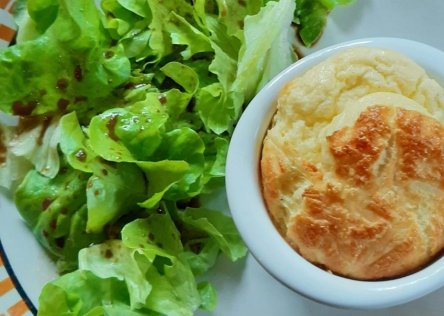We all know that food is a very important part of French culture, and eating is a major part of any trip to France. Of course, strolling through an outdoor market, or going to a bakery to select a delicious pastry are on the must-do list for all travelers. However, when I travel to a foreign country, I love to go to the grocery stores, because this is where local food habits are laid bare.
As a general rule, French people shop more frequently for food supplies than in other countries. This is due to many different things: the desire for very fresh products, smaller refrigerators, the social aspects, the need to pick up the daily baguette, etc. But busy daily life also takes over, so you will see customers just picking up a couple of items for the next few meals, to carts filled to feed the family for the week.
There are many different sizes of grocery stores in France. In the inner cities, you can find mini-supermarkets, and these are practical for picking up a quick lunch or a few emergency items, and prices are a little higher. I do most of my shopping at the intermediate size stores, but there are also mega-sized ones, called hypermarchés, that carry everything from food, to stereo equipment and computers, to tickets for shows and theater.
The biggest surprise you may have when shopping in a French grocery store is the immense aisle size of certain categories, the variety of produce and French products, and the portions.
Portions – Don’t look for a Costco!
A few years ago, my young teen-aged niece Samantha came to visit. She came to the grocery store with me, and I asked her if there was something specific she wanted, her answer being potato chips. I put the bag in the caddy and continued with the shopping. After a few more items were added, Sammy picked up the bag and said that maybe the individual bag was not enough and I should get the family-sized bag to last a couple of days. You already know the end: this was the French family-sized bag.
We laughed, but also knew that we would eat the whole bag at once anyway. We then started noticing all the differences with sizing for all types of products, be it food or not. Boxes of cereal, ketchup bottles, ice cream, shampoo, kid’s snacks, etc. You can draw your own conclusions on this point.

Photo: You won't find this in France, Quaker Oats
Variety of Produce and culturally relevant products
During strawberry season, you can typically find at least 5 different varieties offered: Mara des bois, Gariguette, Ciflorette, and Charlotte. Before coming to France, I thought there was just “strawberry”. The same is true for potatoes, lettuces, radishes etc. A lot of stores have a little sign saying which each variety is used for, which helps a lot. And there is not much in terms of pre-cut fruits and veggies, but this is changing and families have less time to prepare weeknight meals.

Photo: Just some of the different types of potatoes available in France, Pikist
You may have to weigh your own fruit and vegetables before going to the check-out. Make sure you do this if necessary, or you will experience many of the famous gallic shrugs accompanied with the “oh la la” in your direction.
The meat and fish department is also interesting. In France, you will be surprised by the variety of meats and fresh fish and seafood on display. You may find whole rabbits, “abats” (which include specialties like heart, feet, tripe or any other funky part that is edible), a variety of tiny birds and such. France remains a meat-eating country, but reducing meat intake and even vegetarianism is growing, so there is also a very small vegetable-based “meat” section as well.
Also, don’t look for eggs or milk in the refrigerated section – they are not sold refrigerated.

Photo: Eggs are not refridgerated in French supermarkets, L Crotet
Looking for a "madeleine"? You will have a huge decision to make! The variety of typical French specialties is impressive, be it from French wines to different pâtés, the choice is huge. For peanut butter, however, only Skippy is available and in one tiny sized jar.
Aisle size matters
In most American grocery stores, it seems the biggest aisles are allocated to soda, chips, and ice cream. The last temptation is even abundant at the check out counter with candy and chocolate bars, drinks, and gum.
In France, the biggest aisle, more be it a large section of the store, is allocated to dairy products. A large variety of butter and creams for cooking, yogurts of every different milk type and flavor to be enjoyed with every meal or as a snack, and of course cheese. It takes some time to understand how, for example, the yogurt aisle is organized, but once you do, choosing is very efficient. Different sub-categories are separated and include yogurts for kids, unsweetened yogurts, fruit yogurts, dessert yogurts flavored with chocolate or caramel, fat-free yogurt, specially packaged yogurts for when you are out and about, goat or ewe milk yogurts, yogurt with “medicinal” properties, . . . Not surprising when you consider that over 50% of French people eat yogurt at least once per day, as compared to 20% is the US.
In contrast, the soda aisle is small. There is more juice offered than soda. You will have a bigger selection of different types of “limonade” which is a popular French version of a less sweet 7Up, than of Coke or Pepsi. And way, way, way more of a choice of bottle water. This is a good thing.

Photo: Typical soda aisle in a French supermarché, L Crotet
So, the next time you are in France and want a culturally enriching experience, try a supermarket. A few last tips beforehand: most grocery stores are closed on Sunday, and you need to bring your own bags or buy a bag at the check-out (and you must bag your own groceries) and have a one euro coin to unlock the cart (that you get back when you put the cart away).
- Laura Crotet, France Just For You
If you would like to check out a French grocery store while in France, please contact us to help you plan your future trip.












